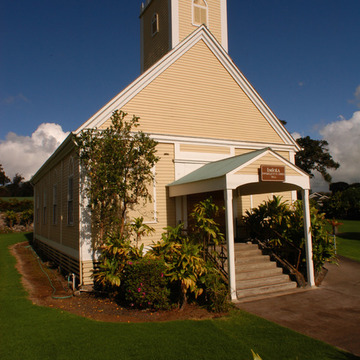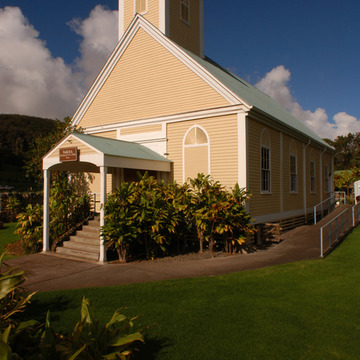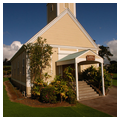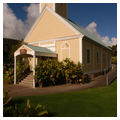Originally built completely of koa wood, Imiola Church's koa exterior siding was replaced with redwood in a 1970s remodeling. However, the rich, red-amber-hued interior remains intact to make it one of the more memorable interiors to be found in any ecclesiastical structure in Hawaii. The building is striking in its simplicity. Its Gothic-arched front windows with shutters and sunburst patterns are similar to those of Kalahikiola Church (HA71.2), which had been completed on the other side of the Kohala Mountains only two years earlier. The bell tower with its crenellated battlement supports a cross, while a gabled portico protects the steps and the parishioners from the frequently damp weather. The interior's denticulated ceiling beams echo a similar treatment which formerly accented the pedimented front gable.
This was the third missionary church building on this site. The initial thatched structure of 1830 served the community for a dozen years before it was replaced with a stone church in 1842. That succumbed to the elements and collapsed in 1855, which led the congregation to construct the more enduring koa church. The name “Imiola” translates as “seeking life.”





